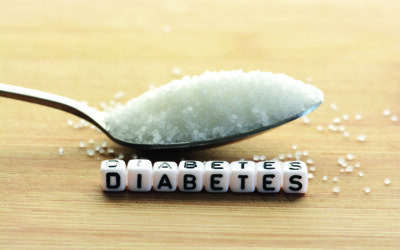Having diabetes doesn’t mean you can never have dessert again. With some simple swaps and diabetic-friendly dessert recipes, you can satisfy your sweet tooth without sending your blood sugar soaring!
Diabetes dessert guidelines
Desserts may seem off-limits, since many are high in sugar – however, remember that for people with diabetes, the total number of carbohydrates of a meal or snack matters more than the total sugar. This means dessert can still fit into your diet, with a few adjustments. Before you head to the kitchen, here are a few dessert guidelines (and some of our favourite sweets!) that fit into a diabetic diet.
Swap carbohydrates
If you opt for something sweet after dinner, you might want to skip the starch during your main meal to keep your total carbs in check. But remember that, while exchanging your sweet potato for cheesecake can keep your carb intake steady, you’ll lose the fibre, vitamins and other ‘good-for-you’ nutrients that the sweet potato would provide. It’s not a good idea to indulge in dessert every night; instead, enjoy desserts in moderation.
Slash serving size
The American Diabetes Association recommends that most people with diabetes should aim for 45-60 grams of carbohydrates per meal. Unfortunately, a bakery-sized cookie can contain 60 grams of carbs alone. Choose a smaller portion, and you can still enjoy something sweet without using up your allotted carbohydrates for the meal.
Go easy on artificial sweeteners
While making desserts with artificial sweeteners can help you cut down on calories and carbs, it’s a better idea to try to reduce your total sweetener consumption (from both sugar and noncaloric sources) because artificial sweeteners are much sweeter than sugar and may enhance your craving for sweets. They have also been shown to alter your gut bacteria, which can affect how the body regulates blood sugar.
Diabetic-Diet-Friendly Desserts
Fruit and diabetes
Fruit is one of the best desserts for people with diabetes (the same goes for people who don’t have diabetes). Not only does it have ‘good-for-you’ vitamins and minerals, it also contains fibre. Fibre helps stabilise blood sugar and can also lower cholesterol. When people with diabetes in one study consumed 50 grams of fibre per day, they had better blood sugar control than those who consumed just 24 grams per day. Half of this fibre was soluble, which is found in fruits, such as apples, oranges and pears. Aim for at least 25-30 grams of total fibre per day.
Chocolate and diabetes
Good news for people with diabetes – eating chocolate may actually improve insulin response and blood sugar control because of the presence of flavanols, which are protective compounds found in cocoa. The problem is that most of the chocolate we eat contains only small amounts of flavanols and is loaded with added sugar. You can still have some chocolate but optimise your intake of flavanols by opting for dark chocolate instead of milk or white.
Gelatine desserts and diabetes
While traditional gelatine desserts, such as Jell-O, contain about 20 grams of sugar in one serving, sugar-free Jell-O can be a good alternative for people with diabetes who want an after-dinner indulgence. The downside? With only one gram of protein and not much else, Jell-O has little nutritional value. Plus, sugar-free versions contain both artificial colours and sweeteners. Even though it’s low in carbohydrates, it’s still best to limit sugar-free gelatine consumption.
Frozen desserts and diabetes
Going out for ice cream may not be as much fun when you have diabetes, since one cup of vanilla ice cream delivers around 30 grams of carbohydrates. Frozen yogurt may seem like a healthier option, but most brands pack more sugar in them than ice cream, since they typically have less fat to help carry the flavour. If you are ordering out, ask for a mini or child-size portion. Otherwise, consider saving money and carbs by making a healthier frozen treat at home.
Bottom line
It is especially important for people with diabetes to keep an eye on their refined sugar intake. Of course, having a healthier and portion-controlled sweet treat occasionally can be part of a healthy diet, even for people with diabetes. The key is moderation and making tweaks to treats so they fit in your diet. And if you’re having trouble keeping your blood sugar under control, be sure to speak with your health-care professional.




